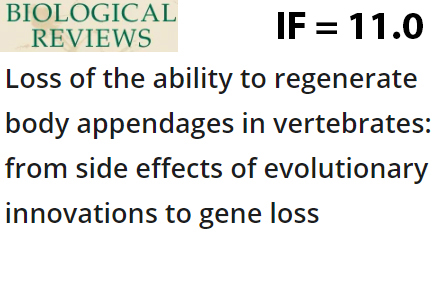
Loss of Ability to regenerate Limbs in Higher Vertebrates: From Side Effects of Evolutionary Innovations to Gene Loss
Researchers from the Laboratory of Molecular Foundations of Embryogenesis at the GNC IBCh RAS have identified the main factors that rendered limb regeneration impossible in modern amniotes (reptiles, birds, and mammals). The authors suggested that after the ancestors of amniotes transitioned to land, their ability to regenerate limbs was suppressed by the side effects of various innovations that emerged at that time, which were necessary for successful colonization of land. This, in turn, stimulated the disappearance of many genes that ceased to participate in regeneration from that moment on. As a result, in modern amniotes, including humans, the inability to regenerate limbs became firmly fixed at the genomic level. The work was supported by the Russian Science Foundation grant 23-74-30005 and published in the journal Biological Reviews. Learn more
june 5, 2024

